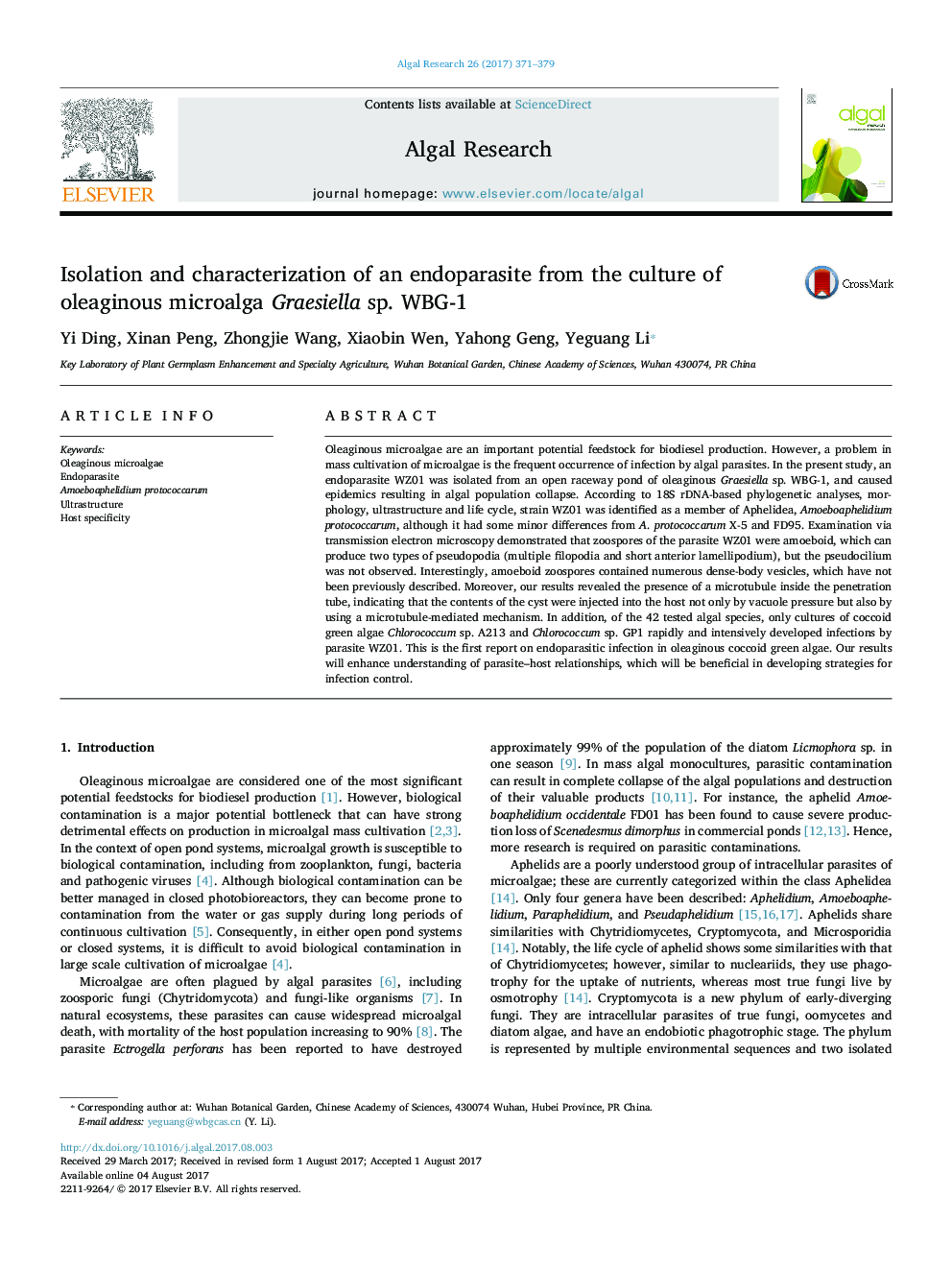| Article ID | Journal | Published Year | Pages | File Type |
|---|---|---|---|---|
| 5478304 | Algal Research | 2017 | 9 Pages |
Abstract
Oleaginous microalgae are an important potential feedstock for biodiesel production. However, a problem in mass cultivation of microalgae is the frequent occurrence of infection by algal parasites. In the present study, an endoparasite WZ01 was isolated from an open raceway pond of oleaginous Graesiella sp. WBG-1, and caused epidemics resulting in algal population collapse. According to 18S rDNA-based phylogenetic analyses, morphology, ultrastructure and life cycle, strain WZ01 was identified as a member of Aphelidea, Amoeboaphelidium protococcarum, although it had some minor differences from A. protococcarum X-5 and FD95. Examination via transmission electron microscopy demonstrated that zoospores of the parasite WZ01 were amoeboid, which can produce two types of pseudopodia (multiple filopodia and short anterior lamellipodium), but the pseudocilium was not observed. Interestingly, amoeboid zoospores contained numerous dense-body vesicles, which have not been previously described. Moreover, our results revealed the presence of a microtubule inside the penetration tube, indicating that the contents of the cyst were injected into the host not only by vacuole pressure but also by using a microtubule-mediated mechanism. In addition, of the 42 tested algal species, only cultures of coccoid green algae Chlorococcum sp. A213 and Chlorococcum sp. GP1 rapidly and intensively developed infections by parasite WZ01. This is the first report on endoparasitic infection in oleaginous coccoid green algae. Our results will enhance understanding of parasite-host relationships, which will be beneficial in developing strategies for infection control.
Related Topics
Physical Sciences and Engineering
Energy
Renewable Energy, Sustainability and the Environment
Authors
Yi Ding, Xinan Peng, Zhongjie Wang, Xiaobin Wen, Yahong Geng, Yeguang Li,
